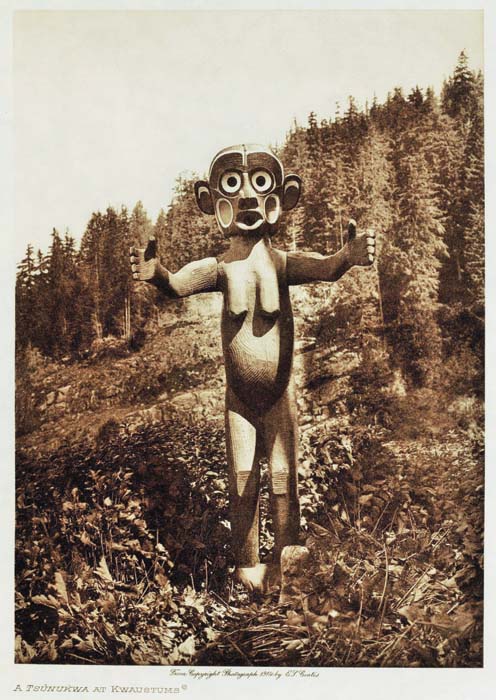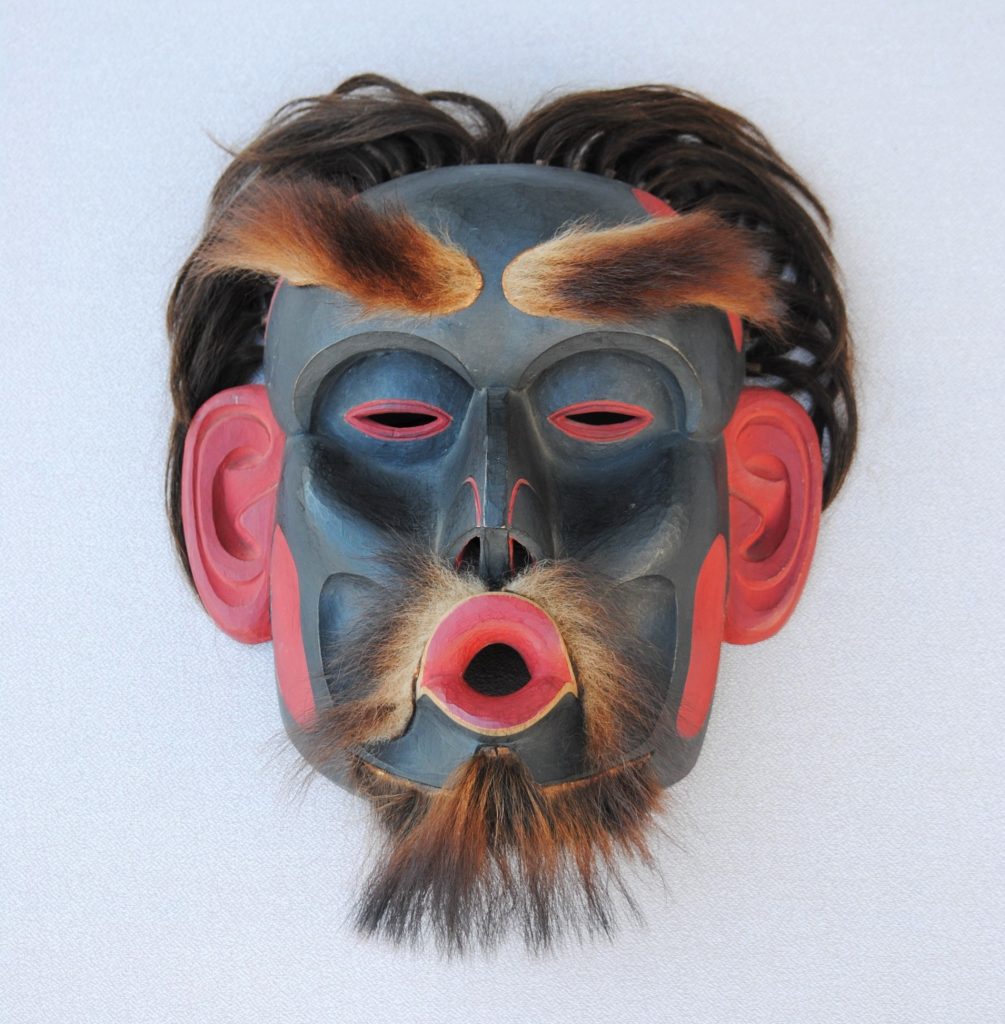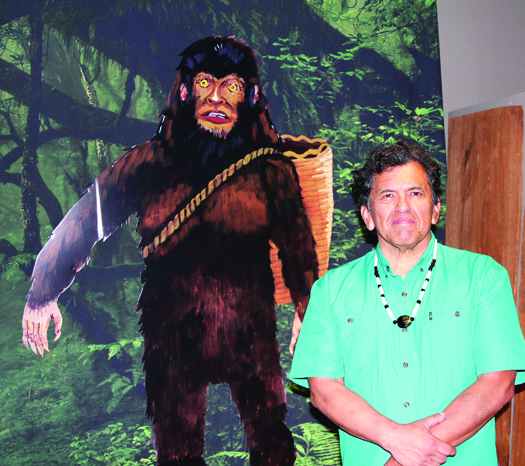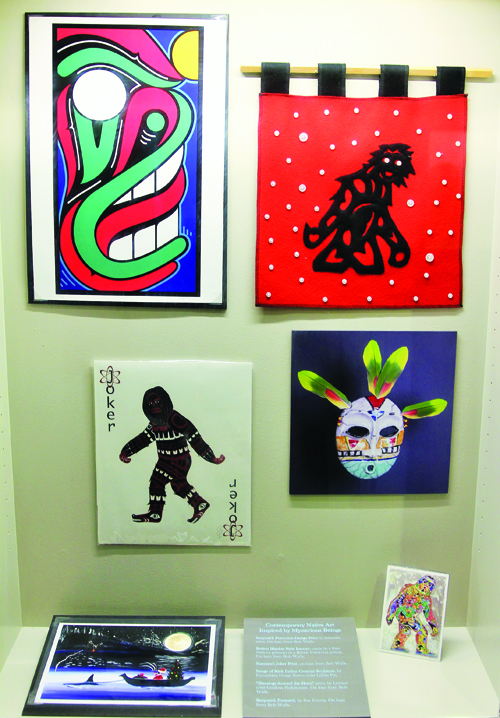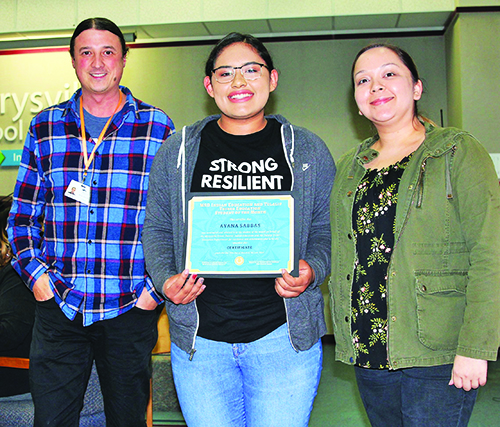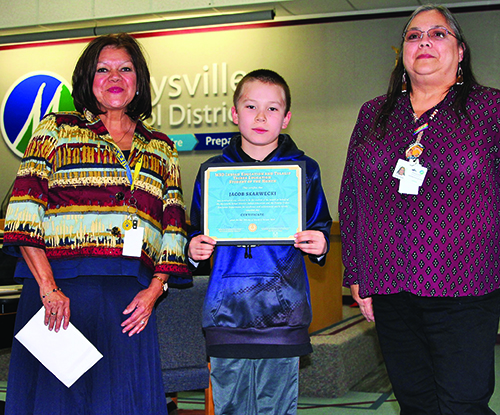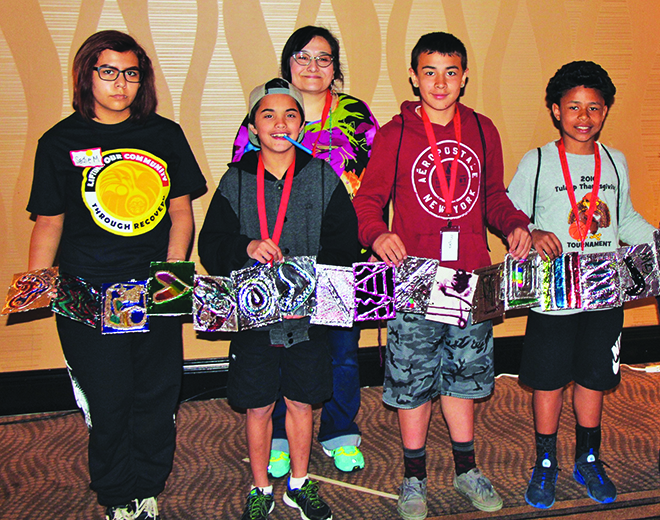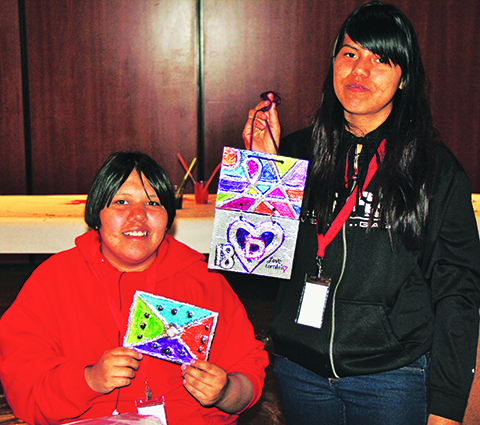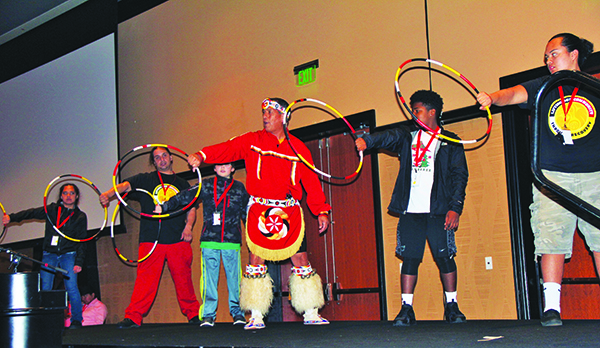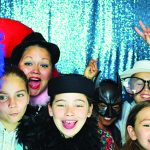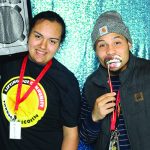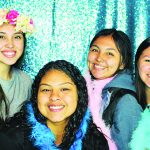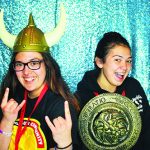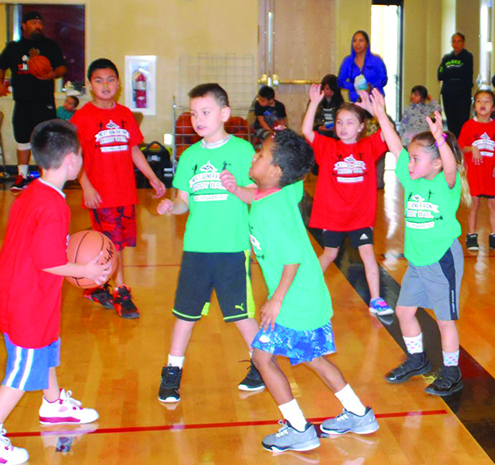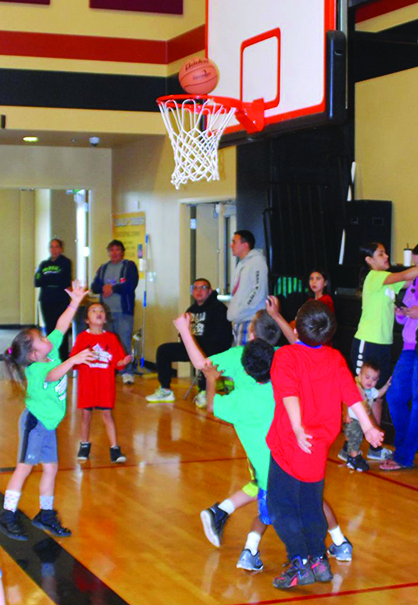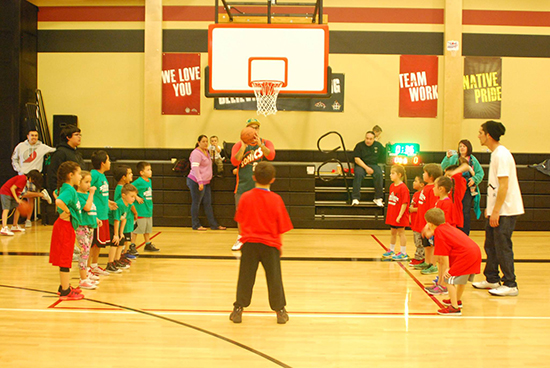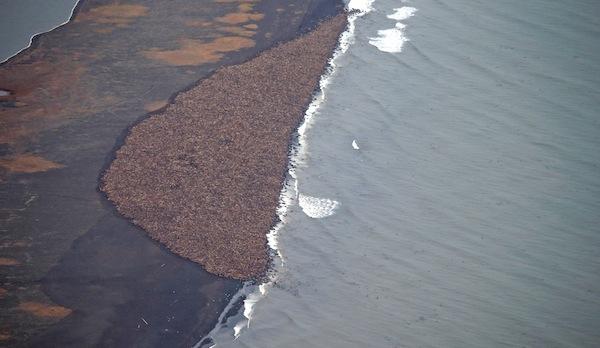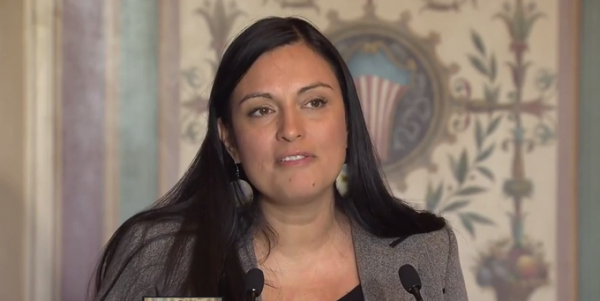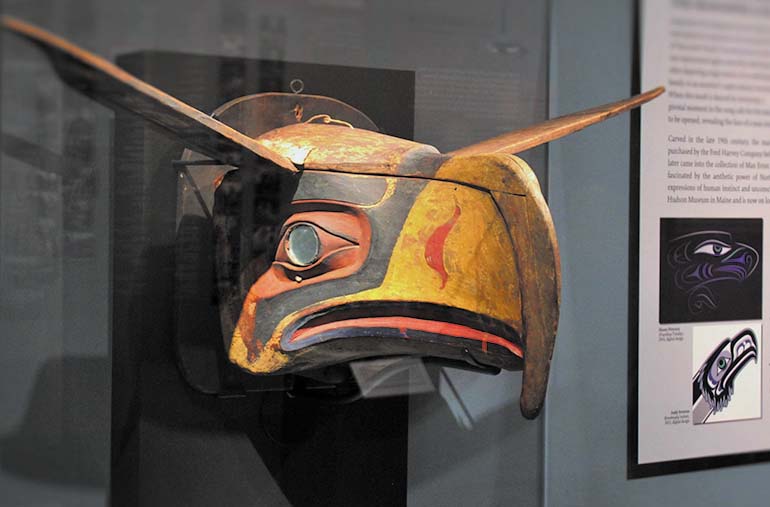
By Micheal Rios, Tulalip News
Tampa Bay’s football team is heading to the Super Bowl. And with their participation in what is typically the most watched American television broadcast of the year, an estimated 115 million households will tune in February 7th to see a squad of Buccaneers compete against the Kansas City Chiefs. Not any specific Chief mind you, like say one representing any of Native America’s 574 federally recognized tribes. More like the stereotypical kind of Chiefs that a certain segment of American culture just won’t let go of.
However, instead of lambasting yet another professional sports team’s name and mascot for clearly misrepresenting Native culture, let’s instead focus on our local football franchise. The Seattle Seahawks; a team that has been embraced by Coast Salish culture and whose logo is directly inspired from an Indigenous masterpiece.
In case you weren’t aware already, there is no such thing as a seahawk. Ornithology experts, people who study birds, theorize the term ‘seahawk’ refers to a combination of an osprey, which is a bird of prey native to coastal North America, and a skua, which in our area we normally call a seagull. So if there isn’t an actual ‘seahawk’ found in nature, then where did the inspiration for the Seattle Seahawks’ logo come from?
The general consensus is that in 1976 the NFL commissioned a logo for the newly-formed Seattle football team. Then-general manager Ted Thompson wanted the Seahawks’ logo to reflect “Northwest Indian culture.” He and his team of concept designers must have been Native culture enthusiasts who stumbled across a truly remarkable piece of Indigenous Northwest Coastal art. That artwork in question was a Kwakwaka’wakw (pronounced: KWA-kwuh-kyuh-wakw) transformation mask from northeastern Vancouver Island.
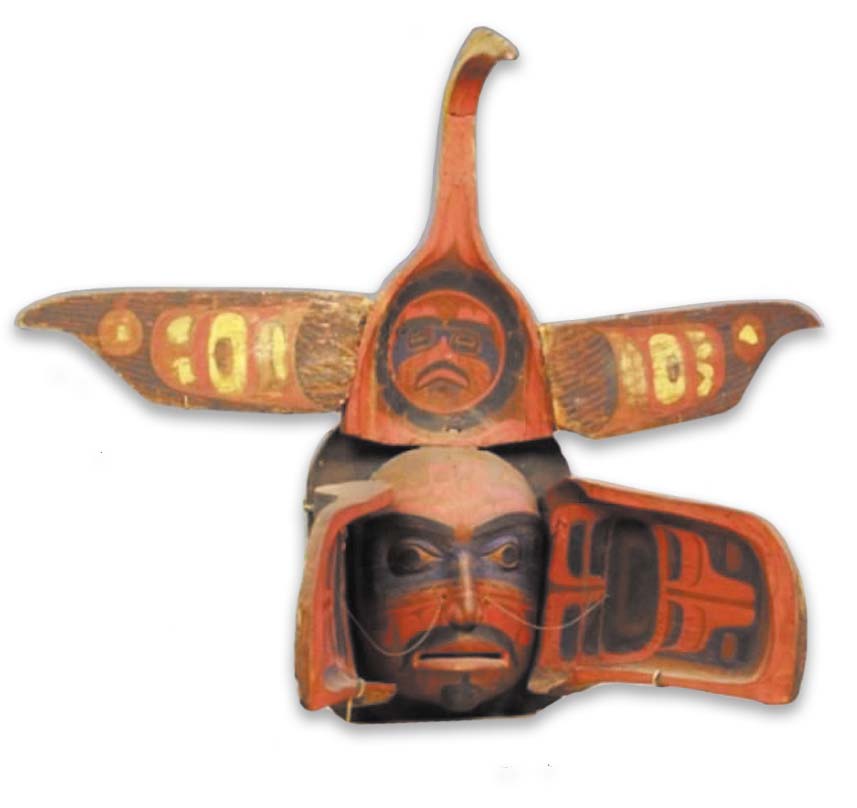
Exquisitely hand carved in the finest local wood, it’s easy to imagine the team of contracted designers becoming infatuated with the ceremonial mask depicting a mighty eagle with bold black and red formline accents unique to the traditional Coast Salish region. In its closed form, the eagle appears to be in motion with its wings spread, as if it’s ready to soar.
According to curators at Seattle’s Burke Museum, long before the Seahawks took the field at the old Kingdome, this hand-carved mask played an important role among the Kwakwaka’wakw people. Transformation masks represented rights owned by individual leaders, often depicting family origin stories or an ancestor’s super-natural encounters. When this mask is danced in ceremony, a pivotal moment in the song calls for the mask to be opened, revealing a stunning human face inside.
Carved in the late 19th century, the mask was purchased by the Fred Harvey Company before 1910 and later came into the collection of Max Ernst. Ernst, Picasso, and other Surrealist artists were fascinated by the aesthetic power of Northwest Coast masks, which they saw as direct expressions of human instinct and unconscious thought. After Ernst’s death in 1976, the mask was acquired by a private collector. Eventually the privately held art collection came to be displayed publically, but always in its open position…meaning its likeness to the Seahawks logo was hidden from view.
In September 2014, the Burke Museum, located on the University of Washington campus, learned of the mask’s whereabouts and launched an online fundraising campaign to bring the mask back to the Northwest Coast. It didn’t take long to raise the money needed to conserve, insure and ship the mask across the country. Within weeks of arrival the hidden history of the mask was unveiled and the origin story of the Seahawks logo went public.
While the details behind the origin story of the Seahawks’ logo remained a mystery for decades, what has always been transparent and secure is a positive celebration by local Coast Salish tribes. All along the Salish Sea, tribal people have embraced the Seahawks logo and re-appropriated it into our culture.
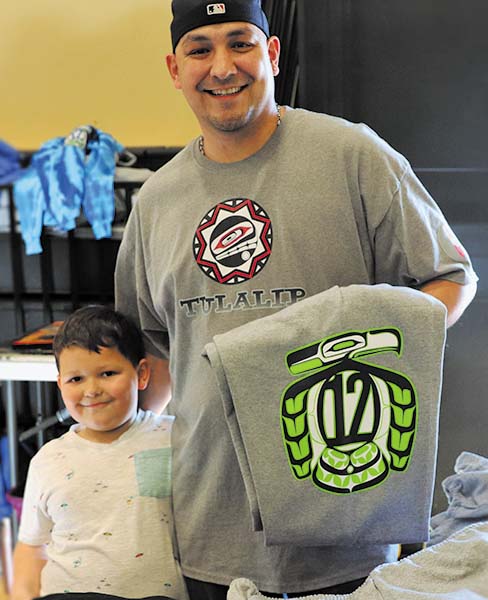
“Great things inspire imitations. In the same way that so many Native people and white people and Asians areinspired by hip-hop, an artform created by black people, many people are inspired by our beautiful art,” wrote attorney and Seattle resident, Gyasi Ross (Blackfeet). “Native people have some beautiful artwork, and of course it inspires people to want a piece of it. The Seahawks logo is a perfect example of that. And we love it.
“But also, the Seahawks are actually active and respectful of the huge Native community here in the Pacific Northwest,” he added. “From speaking at graduations to speaking out against the Redskins mascot, the Seahawks have a great relationship with the Native community here, both urban and Reservation-based.”
Their commitment to Native communities is what distinguishes the Seahawks from so many other organizations that claim to honor Native culture with their logos and mascots, yet contribute little or nothing to their local tribes. The Seahawks have a history of making significant impact to the Tulalip Tribes in particular.

Back in 2008, Seahawk Bobby Engram collaborated with Home Depot, the Kaboom! Program, and Boys & Girls Clubs of Snohomish County to build a 50-foot by 50-foot playground at the reservation’s ‘Club’. In 2014, following the Marysville-Pilchuck High School shooting, the Seahawks hosted tribal member Nate Hatch and his family at CenturyLink Field, where they received the VIP treatment from players and coaching staff.
“It was great to meet Nate,” said Coach Pete Carroll to the Seattle Times. “We’ve communicated a little bit, and we’ve been connected to the whole Marysville-Pilchuck school and the kids. He was really excited to be [on the field]. His mom was there too, so it was really special to have them. I’m sure he had a big day.”
Then in June 2019, Seattle Seahawks legend Michael Bennett hosted a once-in-a-lifetime football camp for Tulalip community youth. Nearly 250 participants from ages 7-18 had an opportunity to catch a pass from and do drills with the Super Bowl champion. Afterwards, Bennett stuck around to sign autographs and take photos with every single one of his adoring fans. Most recently, in October 2019, former Seahawks Cooper Helfet and Jermaine Kearse landed a seaplane right here in Tulalip Bay before spending an afternoon with thirty Tulalip youth.
A history of positive impact. Countless moments to uplift Tulalip youth and inspire them to always dream big. Promoting healthy lifestyle choices and physical fitness as a means of self-discipline to achieve long-term goals. The reciprocal nature of Seahawk respect and appreciation for local tribes and the proud Native fandom they’ve received in return continues to manifest itself in truly imaginative ways.
For starters, its common place to see the Seahawks’ logo reimagined via Coast Salish designs in all possible mediums. Authentically produced by Native artisans, they’ve created blankets, clothing, beaded jewelry, eye-capturing medallions, wooden panels, furniture, flags, face masks, and even 6-foot tall, chainsaw carvings that celebrate the Seahawks’ Native roots. These items and more can routinely be found at powwows, all-Native basketball tournaments, and other Native vendor-friendly events around the region.
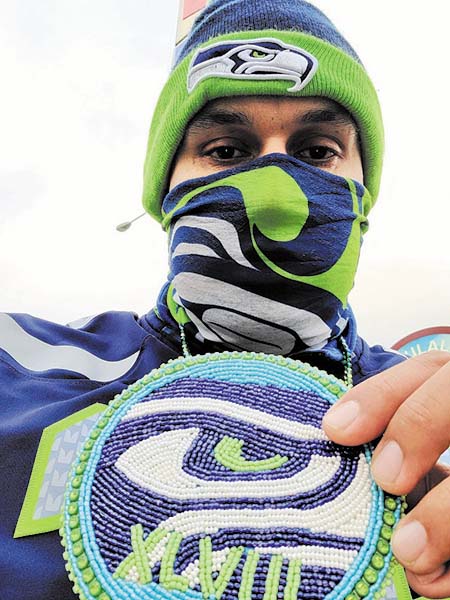
“The Seahawks have given back to our community in so many ways and really made a difference in the lives of our youth,” said lifelong fan and tribal member Josh Fryberg. His family of eight have a tradition once a year to get new Seahawks jerseys so they’re always repping their favorite player. “I’ve been fortunate to experience most of their events held in Tulalip and witnessed firsthand our youth just light up being able to hang out with and throw around a football with their football heroes. It’s encouraging for a lot of young athletes to know it’s possible to become a professional athlete or future Seahawk through hard work and dedication.
“As for the connection between the Seahawks and Coast Salish art, the roots definitely run deep,” he continued. “For my family, we have a lot of Seahawks themed artwork created by very talented Native artists, both from Tulalip and other tribes. More than the art thought, the Seahawks mean family togetherness. Every Blue Friday we rock our jerseys and every game day we gather as a family to cheer on our Seahawks.”
So yeah, the Seattle Seahawks aren’t playing in this year’s Super Bowl. Yet, in the hearts and minds of thousands of Coast Salish tribal members, the Seahawks will always be champions. Not because of a Vince Lombardi Trophy, but because our football team respects their local Native communities off the field. Where it matters most.
